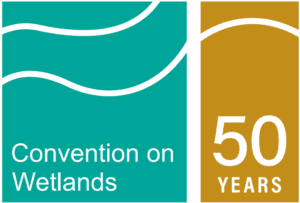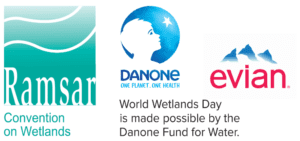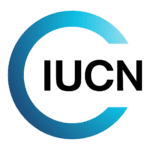Let’s celebrate World Wetlands Day 2021!
Tuesday February 2nd, marks the respectable 50th anniversary of the Wetlands Celebrations, let’s appreciate our wetlands and all they do for the planet!
The celebration
World Wetland Day is celebrated on the second of February. It is a day dedicated to raising awareness about the importance of wetlands for all life on earth. Why the second of February? Because this marks the date of the adoption of the Convention of Wetlands in 1971 – also known as the Ramsar Convention. This year’s theme “Inseparable – Water, Wetlands and Life” highlights the importance of wetlands as a source of fresh water and calls for their protection and restoration.
So – what are wetlands?
Wetlands are vital sources of biodiversity and fresh water and come in many different forms like: Lakes, rivers and swamps, peatlands, deltas and tidal flats, mangroves and coral reefs. Different forms of wetlands can be found all over the world and they are essential for the survival of countless plant and animal species as they provide habitats and breeding grounds. Humans too depend on them, as they are an essential source of fresh water.
Why should we celebrate them?
Despite their importance, the environmental health of wetlands across the world is deteriorating. Whole ecosystems are disappearing due to drainage and conversion to farmland, or because they suffer from pollution. Between 1970 and 2015, the world has lost approximately 35% of its wetlands! Its loss has been driven by climate change, population increase, urbanization, particularly of coastal zones and river deltas, and changing consumption patterns. These have all fueled changes to land and water use, and to agriculture. We are losing wetlands at an alarming rate, so on World Wetlands Day, let’s remind ourselves why these wet ecosystems are so important. For biodiversity, for people, and for the life on Earth.
In Europe, wetlands provide ideal conditions for a vast diversity of habitats and species. Crucial especially for birds, wetlands comprise vital nesting and migratory flyway areas. They are also indispensable for many other species, such as dragonflies, amphibians, fish and a huge variety of plants.
Wetlands are source of fresh water. They are also called “kidneys of the landscape”, as they work as enormous filters, providing us with water that we can drink safely. Only 2,5% of water on earth is fresh water, less than 1% is usable. Wetlands are essential suppliers of drinkable water, and therefore essential for us humans. If we do not take care of our wetlands, they won’t take care of us. That is why we need to:
- Stop destroying, start restoring wetlands
- Don’t dam rivers or over-extract from aquifers
- Address pollution, clean up freshwater sources
- Increase water efficiency, use wetlands wisely
- Integrate water and wetlands into development plans and resource management
Wetlands are our allies against climate change and for climate change adaptation. Wetlands are incredible carbon sinks:
Peatlands store twice as much carbon as forests, despite occupying only 3% of land!
Coastal wetlands like mangrove forests sequester and store large quantities of the so called “blue carbon“. This is carbon that is stored by marine and coastal ecosystems in the vegetation and sediment they grow on. Mangrove forests can store up to 10 times more carbon as the same area of “regular” forests can! Destroying these lands on the other hand, will release these amounts of carbon into the atmosphere.
Additionally, mangrove forests provide essential protection for vulnerable coastal communities. Wetlands located inland on the other hand, are able to soak up large amounts of water, reducing flooding and delaying the onset of droughts. This means, that wetlands provide many nature based solutions, both to battle, and adapt to, climate change.
Finally, wetlands are often a feast for the eyes – providing opportunities for healthy recreation and tourism.
Wetlands in Europe
Many of EUROPARC’s members are Protected Areas containing wetlands and they protect and restore these valuable ecosystems in their daily work. For example in the Cairngorms National Park in Scotland, they are working hard on restoring their peatlands. Or have a look at the newest member of our Transboundary family, Internationaler Naturpark Bourtanger Moor – Veenland, renaturing their bogs. These are just two examples of all the incredible work our members are doing to ensure a healthy future for all.
Protected Areas hold solutions to many of the problems we are facing today and they need appropriate political and financial support.
Join the celebration
How can you show some love for wetlands? On this World Wetlands Day, take part in the global celebration, learn about wetlands and spread the word about their importance so that more people appreciate and protect them! To join the online part, use hashtags #RestoreWetlands and #WorldWetlandsDay on social media or leave a short note here, explaining why you value wetlands!
World Wetland Day is spored by:



